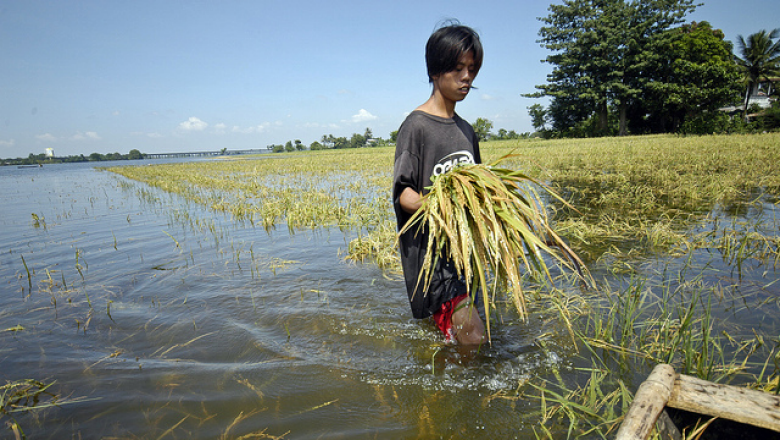Climate change’s negative impacts on agriculture are already being felt around the world, in the form of more frequent extreme weather events that affect crops and livestock and disrupt food production. Agriculture is also a major part of the climate problem, currently generating 19–29% of total GHG emissions.
With a view to better integrating agricultural development and climate-responsiveness, Climate-smart agriculture (CSA) is an integrated approach to managing landscapes—such as cropland, livestock, forests and fisheries—that aims to achieve increased and sustainable productivity, enhanced resilience and reduced emissions.
Drawing on climate-smart profiles for more than 30 countries across Africa, Asia, Latin America and the Caribbean, Bringing the Concept of Climate-Smart Agriculture to Life offers an overview of nearly 300 climate-smart production systems that are being used across different locations and farming systems. This publication also provides insights into where, how and what CSA technologies make the biggest difference, the factors that account for ‘climate-smartness’ and the biggest barriers to CSA adoption.
Main Messages:
- Technologies considered ‘climate-smart’ vary across regions, are incredibly diverse and reflect the context-specificity of opportunities, constraints and vulnerabilities. There is considerable scope to tailor CSA to individual farmers’ needs.
- While CSA is diverse, just five technology clusters --water management, crop tolerance to stress, intercropping, organic inputs, and conservation agriculture--account for almost 50% of all CSA technologies identified by experts as climate-smart across the 33 countries covered by the climate-smart profiles.
- Most technologies considered climate-smart demonstrate synergies between productivity, adaptation, and mitigation, revealing opportunities for co-benefits and potential “triple-wins.”
- The lack of training and information was identified as the single largest barrier to CSA adoption across all regions. Investments in capacity building and knowledge dissemination for farmers, experts, and decision makers are critical for ensuring the widespread adoption of CSA. A weak enabling environment —including unfavorable policies, lack of access to input and output markets and inefficient risk management systems-- as well insufficient economic resources were identified as other barriers to CSA adoption.
- There is no one-size fits-all CSA solution. CSA implementation is most effective when it goes beyond the farm plot level and is applied in an integrated way that takes into account competing sectoral priorities, the cumulative effect of combined CSA technologies and the potential for transformational change.
